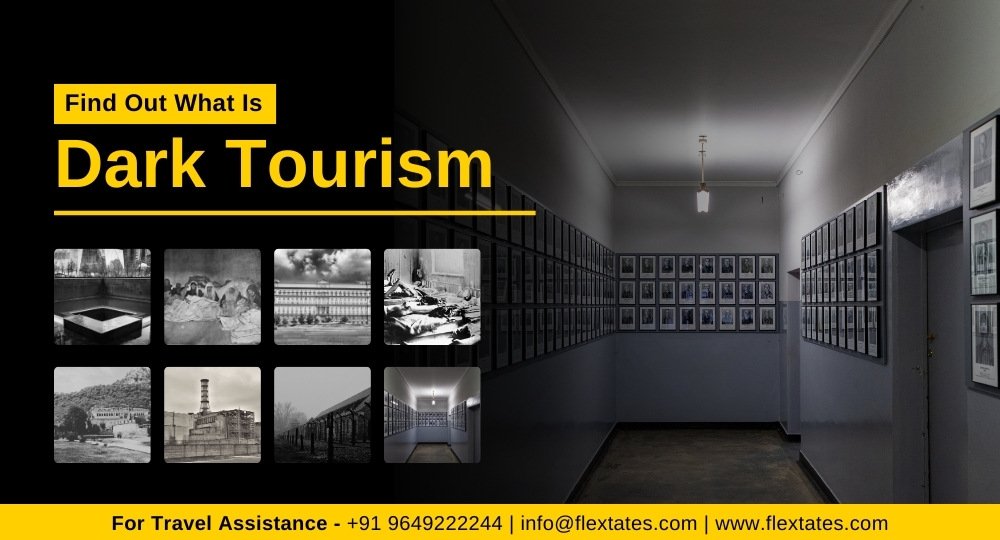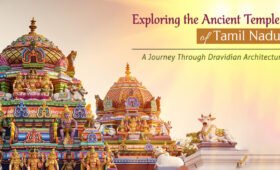So, what’s this weird travel trend called dark tourism? It’s gaining a lot of interest fast. Expected to pull in about US$40.82 billion at a 2.5 percent growth rate between 2024 and 2034, with India topping the list with 5.1% growth. In recent years, the subset of tourism known as “dark tourism” has exploded in popularity.
“India is a country where the past and the present coexist in perfect harmony.” For tourists from all around the globe, India has a lot to offer. India has breathtaking landscapes, from the towering Himalayas to the tranquil backwaters of Kerala.
Many people travel: for work, for leisure, on holiday, to learn, to have fun with loved ones, to meet new people, or just to see the world. As a source of both revenue and jobs, tourism has grown into a massive global business.
The variety of travel experiences available to people has grown in popularity throughout the years. Among the many forms of tourism, there is “special interest tourism,” in which visitors seek out certain experiences or historical sites for example. If you’re looking for a vast array of travel experiences in a country with a rich cultural history, look no further than India.
What is Dark Tourism?
Dark tourism is the practice of travelling to locations connected to tragedy or death. People’s intense curiosity about how the tragedies and fatalities occur there makes them find these locations fascinating. “Grief tourism” or “Black tourism” are other names for dark tourism.
- With a compound annual growth rate (CAGR) of 2.5% from 2024 to 2034. The dark tourism industry is anticipated to reach US$ 40.82 billion by 2034 from US$ 31.89 billion in 2024.
- The growth rates vary by nation, with India leading the pack at 5.1% CAGR and China in second place at 4.7%. In the US, growth is anticipated to reach 1.5%.
- The dark tourism industry has a considerable component that is expected to occupy a 28.6% market share in 2024. Historical and educational sites like as Yad Vashem and Auschwitz-Birkenau are popular tourist destinations.
- By 2024, it is projected that Internet bookings will account for 39.2% of all bookings, dominating the market. This pattern demonstrates how dark tourism is increasingly reliant on online travel agencies for reservations.
- There has been a noticeable rise in the scholarly literature on dark tourism, with publications rising from 173 in 2018 to 256 in 2022. This suggests an increasing curiosity about the motivations behind the visits, the experiences they have, and the sociological implications of doing so.
Types of Dark Tourism
- Grave Tourism
- Prison and Persecution Site Tourism
- Natural Disaster Area Tourism
- Modern Political Sites
- Industrial Disasters
What are the Seven Pillars of Dark Tourism?
- Dark Fun Factories: The places where tragedy and death are commercialized for entertainment purposes.
- Dark Exhibitions: Places where people go to learn about death and suffering.
- Dark Dungeons: Places associated with criminal history and injustice.
- Dark Shrines: Less popular sites near places of death and misery.
- Dark Resting Places: Cemeteries and graveyards.
- Dark Conflict Sites: Places where major battles were fought.
- Dark Places of Mass Killing: Sites of suffering, death, and atrocities.
Popular Dark Tourism Destinations in the World
- Ground Zero, New York – At the site of the 9/11 attacks in New York City is Ground Zero, where you can find the new World Trade Center and the 9/11 Memorial.
- Chornobyl, Ukraine – Tours of the decommissioned Pripyat community are available at Chornobyl, Ukraine, site of the nuclear power plant catastrophe in 1986.
- Murambi Genocide Memorial – The Rwandan museum that houses the relics of the Rwandan genocide victims from 1994 is known as the Murambi Genocide Memorial.
- KGB Headquarters – The KGB Headquarters in Lithuania is now a museum dedicated to the memory of the genocide victims. The building was formerly a prison and a torture centre.
- Concentration camp – Concentration camps in Poland, known as Auschwitz, were the sites of the mass murder of millions of Jews during the Holocaust.
- Peace Memorial Park – The Peace Memorial Park and Peace Pagoda can be seen in Hiroshima, Japan, the location of the atomic blast that occurred in 1945.
- Cambodian Museum – This Cambodian museum chronicles the atrocities committed by the Khmer Rouge in the Tuol Sleng prison, which was formerly a school.
Checkout – 25 Honeymoon Places in Rajasthan | Sustainable Tourism in India
Dark Tourism Destinations in India
- Bhangarh Fort, Rajasthan: This fort is famous for its haunted story and it is believed that the whole city was killed due to the curse of a “Tantrik”. The government of India prohibited entry into the fort after sunset due to some haunted incidents in the past.
- Jallianwala Bagh, Amritsar: One of the biggest genocide of Indian freedom fighters where British policemen killed 1500 Indian freedom fighters.
- Dumas Beach, Gujarat: This beach is known for its paranormal activity, including howling and laughter at night. Many local stories about the place relate the haunted activity with the death of people.
- Three Kings Church, Goa: A church believed to be haunted by evil spirits, with reports of strange activity.
- Roopkund, Uttarakhand: A mysterious lake with hundreds of visible human skeletons at its bottom, especially when the snow melts.
- Shaniwarwada, Pune: A historical fort associated with paranormal activity, particularly on full moon nights.
- Cellular Jail, Andaman Nicobar Island: The most famous jail and most horrible of the British era. British army used this for the Indian freedom fighters and they killed many of them here.
Also Read – Local Festivals to celebrate in Rajasthan | Art of Handblock Printing Rajasthan
| Ethical Consideration | Description |
|---|---|
| Respect for victims and survivors | Sensitive interpretation of events, avoiding sensationalism or exploitation. |
| Balancing commercialization and education | Striking a balance between attracting visitors and ensuring respectful commemoration. |
| The role of local communities | Ensuring local communities benefit from tourism and have a say in how sites are presented. |
Challenges of Dark Tourism
- Infrastructure and accessibility: Ensuring the provision of appropriate amenities for guests without disrupting the surroundings.
- Insufficient knowledge and promotion: Increasing public knowledge of dark tourism sites while being mindful of sensitivity.
- Potential for adverse effects: Addressing the possibility of negative effects on mental well-being or downplaying the significance of catastrophes.
Opportunity for Dark Tourism
- Through the creation of jobs and the enhancement of local economies through tourism, dark tourism has the potential to make a contribution to economic growth.
- In addition to preserving historical landmarks, it may help people better comprehend what happened in the past.
- Through the promotion of social responsibility and the encouragement of meditation on human suffering, dark tourism has the potential to bring about increased empathy and social consciousness.
A vacation experience that is both one-of-a-kind and thought-provoking is provided by dark tourism. Even if it has the potential to be sensitive, it also has the potential to contribute to the preservation of historical heritage, economic development, and social awareness. We need to make sure that ethical thought remains in the forefront of our minds as the sector continues to expand. We are obligated to use caution and responsibility while dealing with dark tourist places.




